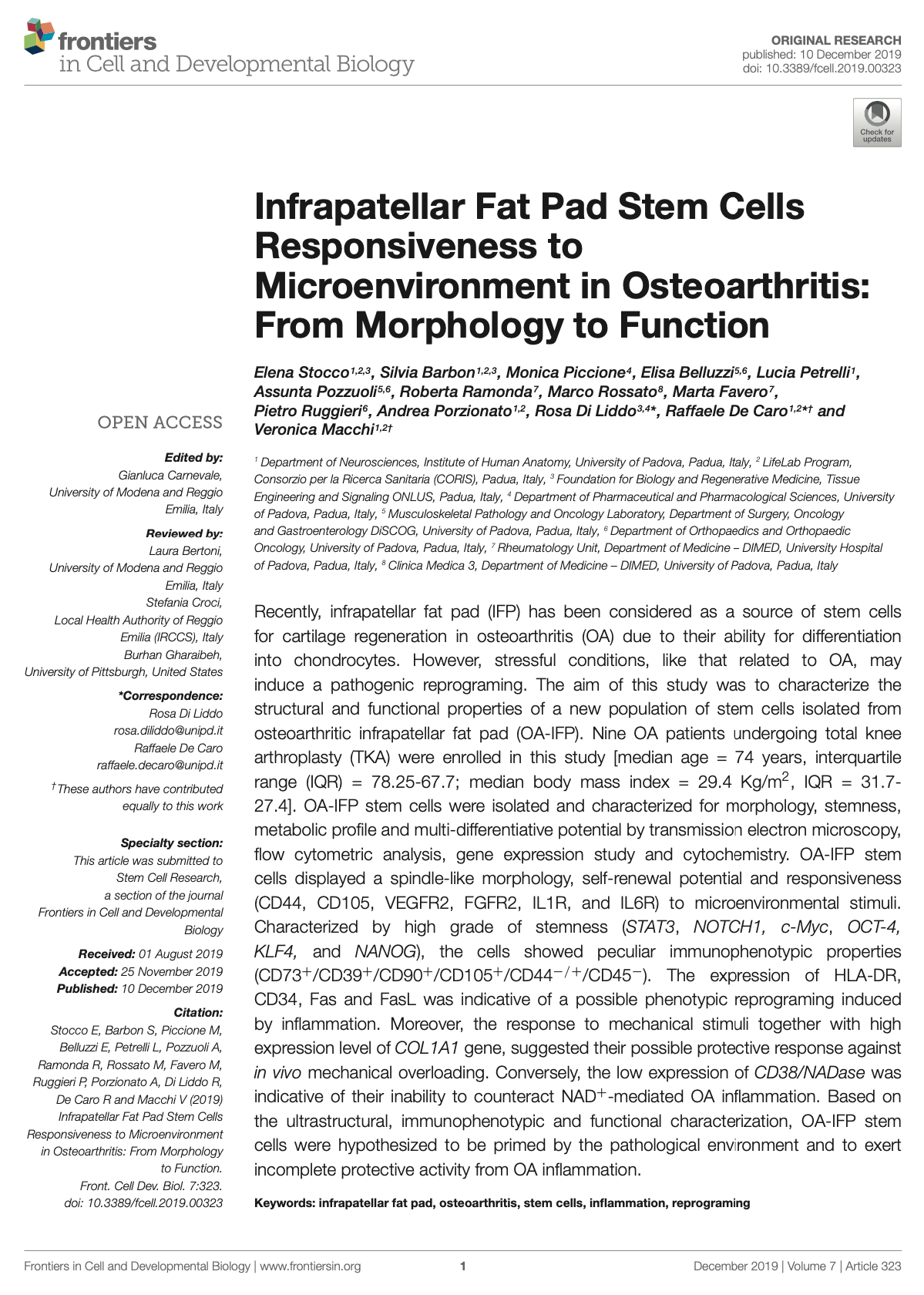
- June 08, 2021
Infrapatellar Fat Pad Stem Cells Responsiveness to Microenvironment in Osteoarthritis: From Morphology to Function
Elena Stocco, Silvia Barbon, Monica Piccione, Elisa Belluzzi, Lucia Petrelli, Assunta Pozzuoli, Roberta Ramonda, Marco Rossato, Marta Favero, Pietro Ruggieri, Andrea Porzionato, Rosa Di Liddo, Raffaele De Caro and Veronica Macchi|Department of Neurosciences, Institute of Human Anatomy, University of Padova, Padua, Italy; LifeLab Program, Consorzio per la Ricerca Sanitaria (CORIS), Padua, Italy; Foundation for Biology and Regenerative Medicine, Tissue Engineering and Signaling ONLUS, Padua, Italy; Department of Pharmaceutical and Pharmacological Sciences, University of Padova, Padua, Italy; Musculoskeletal Pathology and Oncology Laboratory, Department of Surgery, Oncology and Gastroenterology DiSCOG, University of Padova, Padua, Italy; Department of Orthopaedics and Orthopaedic Oncology, University of Padova, Padua, Italy; Rheumatology Unit, Department of Medicine – DIMED, University Hospital of Padova, Padua, Italy; Clinica Medica 3, Department of Medicine – DIMED, University of Padova, Padua, Italy |Frontiers in Cell and Developmental Biology|2019|7, 323; DOI: 10.3389/fcell.2019.00323
Infrapatellar fat pad (IFP) is a source of stem cells for cartilage regeneration in osteoarthritis (OA) as they can differentiate into chondrocytes. On the other hand, stressful situation like that related to OA may induce pathogenic reprogramming. In this study, the structural and functional properties of new population stem cells isolated from OA-IFP was characterised. The OA-IFP stem cells were isolated from nine OA patients undergoing total knee arthroplasty. The cells were characterised for morphology, stemness, metabolic profile and multi-differentiative potential by transmission electron microscopy, flow cytometric analysis, cytochemistry and gene expression study for genes related to stemness (TERT, REX1, SOX2, STAT3, NOTCH1, c-Myc, OCT-4, KLF4 and NANOG) and metabolic activity (CD38 and CALR) using Mic qPCR cycler. The stem cells displayed spindle-like morphology, self-renewal potential and responsiveness to microenvironmental stimuli (CD44, CD105, VEGFR2, FGFR2, IL1R and IL6R). The expression of HLA-DR, CD34, Fas and FasL showed possible phenotypic reprogramming induced by inflammation and the high expression of COL1A1 suggests its possible protective response against in vivo mechanical overloading. However, the low expression of CD38/NADase showed their inability to counteract NAD+-mediated OA inflammation. In summary, OA-IFP stem cells are primed by the pathological environment and to exert incomplete protective activity from OA inflammation.